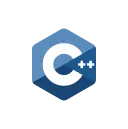Each Folder can also contain its own set of Folders, enabling admins to create multiple layers of organization. Depending on how carefully admins lay things out, this could lead to confusion. They are https://inomarka54.ru/mirovye-novosti a freeform hierarchy, meaning admins can use them in whatever way makes the most sense for their company. Cloud systems analysts are responsible for monitoring the performance of your cloud systems.
- Moreover, for many companies, the organization model I walked through above was the result of evolving and adapting as needs changed and less of a wholesale reorg.
- In the spirit of product mindset, we encourage starting small and iterating as opposed to boiling the ocean.
- The cloud compliance specialist helps develop privacy policies and processes.
- The distinction between traditional administrative roles becomes blurred as team members are responsible for a more comprehensive range of technologies or even the whole stack.
Members of developing cloud operations teams need continual training to improve their technical abilities and stay up to date to understand cloud technologies, industry standards, and security requirements. Investing in CloudOps skills building through training courses, seminars, and conferences is essential for cloud projects to remain secure and competitive. The cloud architect is responsible for designing the cloud-based infrastructure and supervising the cloud computing strategy. They are tasked with evaluating and analyzing cloud service offerings, determining cloud architecture solutions that fit the requirements of the business and ensuring optimal performance of cloud applications and services.
Management structure, key people, & their direct reports
IT asset and financial management teams would control the contracts, suppliers, budgets and coordinate the work so the applications could be put into production without straying too far from the scope, schedule and budget. Operations and Infrastructure teams would build, monitor and fix the platforms used, as well as some services like telecom, circuits and the internet. Application Support teams provided specialized support for the application deployed, front-ended by the Service Desk that handled customer calls or requests. The Infrastructure Engineering team is responsible for making the process of getting a deployable artifact to production and managing it as painless as possible for product teams. Often this looks like providing an “opinionated platform” on top of the cloud provider.
Modern DevOps is usually tightly coupled with cloud operations and cloud management but can also cover some on-premise activities. We’re seeing a class of companies (small and mid-size companies) reaping the benefits of moving to the cloud, whereas larger companies are not necessarily seeing the same benefits. Larger companies are replicating their traditional structures and processes in the cloud, whereas smaller companies are building processes from the ground up that are optimized for the cloud. These smaller companies are centralizing traditional roles and functions into one new persona—cloud DevOps—that spans security, networking, and troubleshooting. With their cloud-first approach, these companies have the most to gain in the growing world of cloud. Application development in the traditional, pre-cloud model, especially for larger companies, can be thought of as a linear process—similar to a baton being passed between teammates (e.g., the application team hands off the baton to the security team).
Organizational Structure and IT Strategy for Evolving with ‘The Cloud’
This involves building or providing solutions for things like CI/CD, artifact repositories, documentation portals, developer onboarding, and general developer tooling. Often a small Developer Productivity team can create a great deal of leverage by providing these different tools and products to the organization. And as you might infer from the name, this group is itself composed of two subgroups. Infrastructure is about enabling product teams, and Reliability is about providing a first line of defense when it comes to triaging production incidents. This latter subgroup is, in and of itself, its own post and worthy of a separate discussion, so we’ll set that aside for another day.
Always think of a Resource as a single-purpose entity, devoted to serving a specific function for its Project. While shared Resources are possible, they can make the organizational hierarchy confusing. They can also create complex interdependencies that can be difficult to unwind later. Leaning into Google Cloud’s organizational structure can help create a scalable application architecture.




